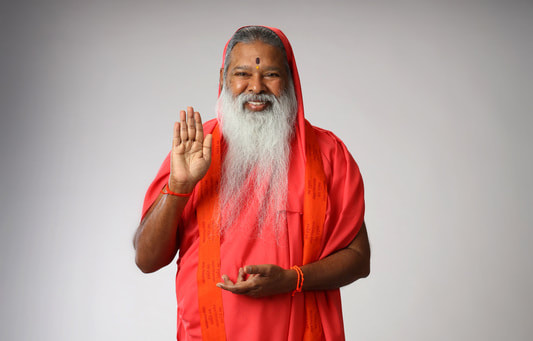Tamil Nadu, 06 Nov 2024: Jambukeswarar Temple, located in Thiruvanaikaval near Tiruchirappalli in Tamil Nadu, India, is one of the most ancient and revered temples dedicated to Lord Shiva. It is part of the Panchabhoota Sthalams, a group of five temples symbolizing the five natural elements. Specifically, this temple represents neer (water), with Lord Shiva here worshipped as Jambukeswarar and Goddess Parvati as Akilandeswari. Known for its architectural beauty and unique legends, the temple attracts thousands of devotees and tourists every year.
Ancient History and Architecture
Jambukeswarar Temple was built during the early Chola period, around the 2nd century CE, under the reign of Kochengat Cholan, a devout Chola king. According to ancient Tamil texts, the temple’s architecture is inspired by the Dravidian style, featuring towering gopurams (gateways), intricate carvings, and sprawling courtyards. The temple complex is expansive, covering several acres, with five concentric enclosures known as prakaras, which symbolize the layers of human existence and spirituality. Each enclosure houses various shrines, halls, and sacred water bodies. The fourth enclosure, known as the Vibhuti Prakara, is particularly significant as it is said to have been built by Kochengat Cholan himself.
A unique feature of the temple is its Lingam, representing the water element. The Jambukeswarar Lingam is located in a shrine that is perpetually wet, with water continuously seeping from beneath it. This phenomenon has intrigued devotees and researchers for centuries and adds to the temple’s mystical atmosphere.
Stories and Legends Associated with the Temple
The temple is steeped in mythological stories and folklore. One popular legend tells of Goddess Parvati, who performed penance at this site to seek Lord Shiva’s blessings. Disguised as a devotee, she is said to have made a Lingam out of water from the temple’s underground stream and worshipped it. Pleased by her devotion, Lord Shiva blessed her and took residence in the form of Jambukeswarar. This legend is celebrated daily in the temple, where a priest symbolically represents Goddess Parvati and performs puja (worship) for Lord Shiva.
Another prominent story involves an elephant named Jambu who worshipped Lord Shiva at this very spot. The elephant is said to have offered flowers and water to the Lingam every day. Impressed by the elephant’s devotion, Lord Shiva blessed it and was henceforth known as Jambukeswarar. This legend is the origin of the temple’s name, “Jambukeswarar,” honoring the elephant’s dedication.
Significance and Beliefs
As one of the Panchabhoota Sthalams, the Jambukeswarar Temple holds special significance in Shaivism, the sect of Hinduism devoted to Lord Shiva. It is believed that worshipping here brings blessings associated with the water element, such as emotional well-being, purification, and renewal. Devotees also believe that a pilgrimage to the temple helps alleviate sufferings related to the doshas (imbalances) in one’s astrological chart.
The deity Akilandeswari, revered as a powerful manifestation of Goddess Parvati, is also worshipped here. According to local beliefs, she embodies the universal mother and provides protection and blessings, particularly to women and children. Pilgrims visit her shrine seeking prosperity, marital harmony, and spiritual upliftment.
The temple is also renowned for its annual Aadi Pooram festival, celebrated in honor of Akilandeswari during the Tamil month of Aadi (July-August). The grand festivities, marked by processions, music, and rituals, attract devotees from across Tamil Nadu and beyond. Another key event is the Panguni Brahmotsavam, which takes place in the Tamil month of Panguni (March-April) and involves elaborate rituals to celebrate the divine union of Jambukeswarar and Akilandeswari.
Visiting and Travel Information
- Location: Jambukeswarar Temple is situated in Thiruvanaikaval, about 3 km from the city center of Tiruchirappalli in Tamil Nadu.
- Nearest Airport: The nearest airport is Tiruchirappalli International Airport, located approximately 12 km from the temple.
- Railway Access: Tiruchirappalli Junction is the closest major railway station, well-connected to major cities in Tamil Nadu and across India.
- Local Transport: Regular buses, taxis, and auto-rickshaws are available from Tiruchirappalli to Thiruvanaikaval. Many pilgrims also choose to stay in Tiruchirappalli due to its proximity to the temple and the availability of accommodation options.
Temple Timings and Facilities
The temple is open to devotees from early morning until late evening, with specific times for various rituals.
– Morning hours: 6:00 AM – 12:00 PM
– Evening hours: 4:00 PM – 8:30 PM
The temple has facilities for prasadam (holy food offering) and archana (special offerings). Guided tours are available for devotees and tourists who wish to learn more about the temple’s history and significance. The temple management also organizes special pujas and events during auspicious times, which are announced in advance.
Dress Code and Etiquette
Visitors are encouraged to wear traditional attire to show respect for the sanctity of the temple. Men are generally required to wear dhotis or traditional trousers, and women are advised to wear sarees or salwar kameez. Shoes must be removed before entering the temple premises, and photography is usually restricted inside the sanctum sanctorum.
Nearby Attractions
Thiruvanaikaval is located close to several other famous temples and tourist spots, including the Rockfort Temple, Samayapuram Mariamman Temple, and the Srirangam Temple, making it an ideal destination for pilgrims interested in exploring Tamil Nadu’s spiritual heritage.












